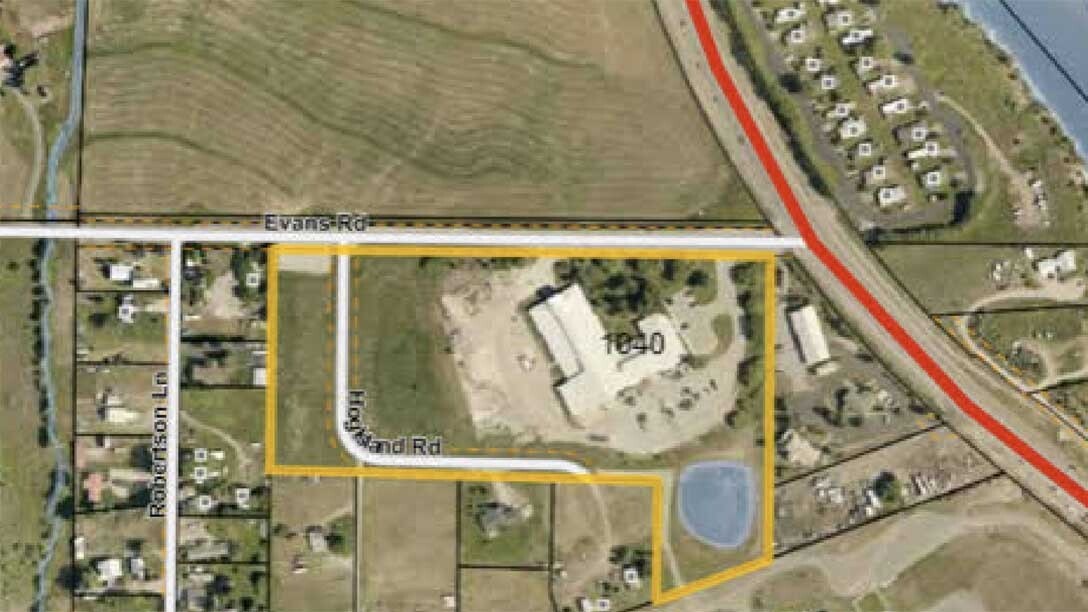Employee housing proposed by the Wyoming Department of Transportation to keep snow plow drivers and highway patrol troopers living in the community they serve has been rejected by Teton County’s planning commission.
WYDOT has proposed using its 14.4-acre site in the Hog Island area of Jackson to build 28 residential units to house department employees in the area, about half of whom now live in neighboring communities and are sometimes unable to reach Jackson because of bad road conditions, according to department Director Luke Reiner.
“It’s about public safety,” he said.
But the planning commission in December unanimously rejected a department request to change the area’s zoning to allow the project to proceed.
The vote is the latest development in WYDOT’s struggle to find housing for employees in an area where available housing is very limited.
More than half of WYDOT’s 36 Jackson employees live outside of Teton County in neighboring communities, including plow drivers, maintenance workers, drivers services staff and Wyoming Highway Patrol (WHP) troopers, Reiner said.
This poses a problem, he noted, particularly in bad weather when those employees can be stranded on the wrong side of an avalanche or blocked pass, impacting their ability to provide vital services with sufficient emergency response times.
The department started taking a serious look at the housing situation around three years ago when Reiner took over as director and saw that it was largely the WHP troopers and snowplow operators living outside the county which affected response times.
Keith Compton, a WYDOT district engineer, said in-town housing would also ease the travel burden faced by the employees, many of who live on the other side of Teton Pass from Jackson and must travel Highway 22, one of the state’s busiest two-lane highways, in an area prone to avalanches.
Recruiting has also been affected by the lack of housing Reiner said, noting the agency is down by six snowplow drivers in Teton County.
Offering housing would help in recruiting and filling open positions, Reiner told Cowboy State Daily.
No Vacancies
For at least the last four years, Teton County rental units have been filled, according to Stacy Stoker, housing manager for Jackson/Teton County Affordable Housing, with more than 1,000 applicants waiting to move into units as they become available.
“It’s just next to impossible for anyone to find anything to rent,” she said.
Rentals, when they do become available, are exorbitantly expensive, with studio apartments going for more than $2,000 a month and three-bedroom units renting for upwards of $3,667 monthly. The costs of these units have increased by 137% since 2008, according to a recent data rental report by the housing department.
Buying property is equally prohibitive, Stoker said, with the average price of a condo running around $1 million and $3 million for a single-family home.
Given the skyrocketing cost of real estate and lack of availability in Jackson, Reiner said that WYDOT decided building on its own property seemed like the best solution.
Building employee housing on government-owned land is not unprecedented in the region. Teton County Weed and Pest provides on-site housing at their facility in the area.
“Not Appropriate For The Neighborhood”
But planning commission members said they could not support the change in zoning for WYDOT’s land because the entire Hog Island neighborhood is currently in the process of being rezoned. Commission members felt they needed a better understanding of future plans for the entire neighborhood before making a decision on the WYDOT land, according to Chris Neubecker, director of planning and building services for Teton County.
Neubecker told Cowboy State Daily that the commission also had concerns about traffic and water quality as well as “the size and scale of the future WYDOT housing development or other permitted uses that would be allowed by the new zoning would not be appropriate for this neighborhood.”
The planning commission plays an advisory role for the Teton County Board of Commissioners, which will make the decision on the Transportation Department’s zoning change request after a public hearing on March 1.
The rezoning request has the support of Teton County Engineer Amy Ramage, who said adequate water for the housing would not be a problem because the development could tie into a system built in 2018 for a nearby school.
“I strongly support the intent of the project to house critical workers near their place of employment,” Ramage wrote in comments to the planning commission, noting the project has the potential to improve the level of safety and service to the community.
She also said it would decrease miles traveled by WYDOT employees, which, along with providing affordable housing for service workers, is a goal of the county’s Comprehensive Plan and Integrated Transportation Plan.
The Teton County Housing Department likewise green-lighted the proposal noting the need for affordable housing for employees.
The Teton County Road and Levee Department gave its blessing as well, saying it did not see any issues with the proposed zone change as it relates to local roads.
Teton County school Superintendent Gillian Chapman voiced concerns regarding the speed limit in front of the elementary school as well as lack of a traffic light but said that WYDOT has indicated a willingness to install appropriate signage.
However, the project also had opposition.
In a letter responding to the proposal, area resident Rosi De Haan said that adding 28 units would completely change the neighborhood.
She pointed to complaints about the way dirt piles and gravel are stored on the property and said the addition of new residents to the neighborhood would have a negative impact.
“This massive addition of people would also have a negative impact on our precious aquifer and there is an issue about how such a complex would take care of sewage,” she wrote.
In fact, WYDOT is not required to obtain the county’s permission to build the housing units on its own property.
But Reiner said in the interest of maintaining good partnerships with the communities it serves, the department is going through the application process as was suggested by the county. The fees to apply cost WYDOT $1,629.
“We work really hard to be partners with our local entities, counties, municipalities,” he said, “so that’s why we said, ‘yeah, we’ll work through the process.”
Funding
The WYDOT employee housing project is expected to cost $16.5 million and will be built in phases as funding allows.
The agency is hopeful some funding for the project will come from the recently passed Bipartisan Infrastructure Law – formerly known as the Infrastructure Investment and Jobs Act.
The 28 proposed units would be a mix of single- and multi-family two-story units to be built adjacent to the 49,603-square foot WYDOT facility that houses the driver’s licenses services, vehicle storage and a maintenance shop.
The agency has not yet determined whether the employee housing would be free to the employees as part of the employment package.
“Typically, it is provided at no cost to the employee in order to encourage recruitment and retention in areas with housing challenges, usually in remote locations,” said Doug McGee, a department spokesman. “However, with this being very early in the process, those details have not been developed.”
Reiner refrained to comment on whether the agency will move forward with plans to build should the board of county commissioners reject the zone change. He reiterated his desire to work with the community and leaders to follow the process.
“If there’s an eventual rejection,” he said, “then one has to weigh options.”







